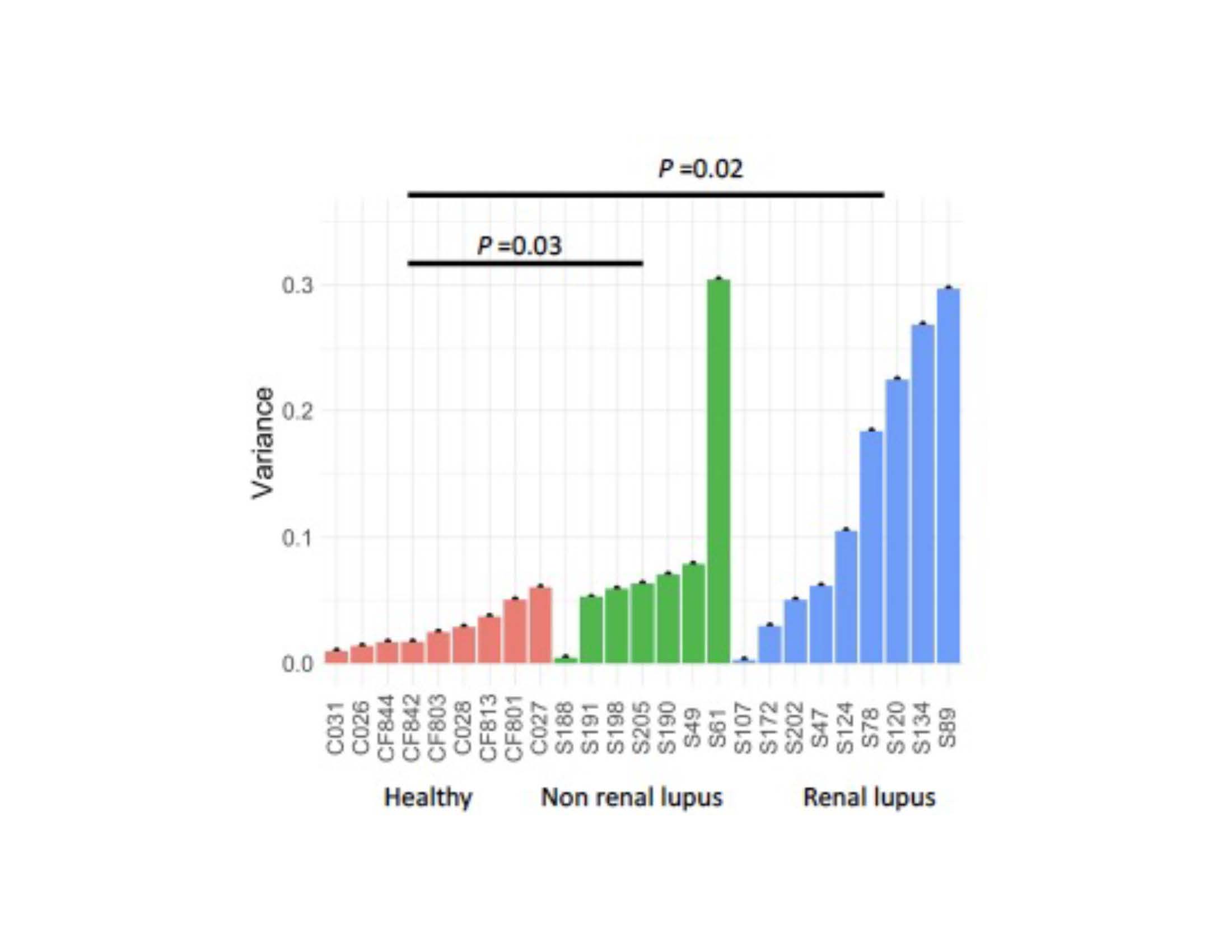Session Information
Date: Sunday, November 7, 2021
Title: SLE – Diagnosis, Manifestations, & Outcomes Poster II: Manifestations (0855–0896)
Session Type: Poster Session B
Session Time: 8:30AM-10:30AM
Background/Purpose: Systemic Lupus Erythematosus is the archetypic systemic autoimmune disease in which dysbiosis in the gut microbiome has been postulated to contribute to disease development in genetically-susceptible individuals. To investigate for dynamic-relationships between gut-microbial community shifts and disease activity, we performed taxonomic surveys using 16S rRNA gene amplicon-libraries from female patients and healthy controls (CTL).
Methods: To study the gut microbial communities in disease-affected individuals, we examined two to six sequential fecal samples obtained from 16 individual lupus patients, representing 44 samples obtained over 24-291 weeks. For comparisons, we also evaluated 72 samples from 22 healthy adult female volunteers, with 2 to 12 samples from 9 of these CTL. To assess the diversity within these bacterial communities, fecal DNA was extracted, followed by targeted amplification of a standard interval to generate 144 individual 16S rRNA gene amplicon libraries. Community-wide multivariate analysis were used to estimate subject variances in libraries from individual donors based on Jensen-Shannon Divergence with the Tw2 statistic,
Results: Lupus gut communities commonly displayed significant imbalances in alpha and beta microbiota diversity as compared to control subjects. The communities in each individual lupus patients exhibited unique differences from other patients — a pattern of disease-associated heterogeneity in dysbiotic responses termed the Anna Karenina Principle. From community-wide ecological multivariate analysis, we documented significantly greater intra-individual longitudinal microbiota community instability in Lupus patients than in healthy individuals and more so in Lupus Nephritis (LN) patients. Taxonomic analyses also documented transient spikes of several potentially pathogenic bacterial species, and by far the most prevalent were blooms of Ruminococcus blautia gnavus documented in 4/9 LN and 1/7 non-renal patients. From libraries obtained over many months to several years, RG blooms were concordant with disease flares.
Conclusion: As many Lupus patients suffer relapsing illness despite appropriate follow-up, evaluation, and treatment, we speculate that gut blooms of pathogenic bacteria, which impair gut barrier function and stoke systemic inflammation, directly contribute to lupus immunopathogenesis. We propose that future therapeutic interventions that are designed to promote a durable cure, consider the necessity to target both the immunologic/inflammatory abnormalities and re-establish stability in the gut microbiota community.
To cite this abstract in AMA style:
Azzouz D, Chen Z, Li Z, Deng J, Izmirly P, Fenyo D, Buyon J, Alekseyenko A, Silverman G. Disease Flares in Lupus Are Concordant with Ruminococcus Blautia Gnavus Blooms Within Unstable Gut Microbiota Communities [abstract]. Arthritis Rheumatol. 2021; 73 (suppl 9). https://acrabstracts.org/abstract/disease-flares-in-lupus-are-concordant-with-ruminococcus-blautia-gnavus-blooms-within-unstable-gut-microbiota-communities/. Accessed .« Back to ACR Convergence 2021
ACR Meeting Abstracts - https://acrabstracts.org/abstract/disease-flares-in-lupus-are-concordant-with-ruminococcus-blautia-gnavus-blooms-within-unstable-gut-microbiota-communities/

